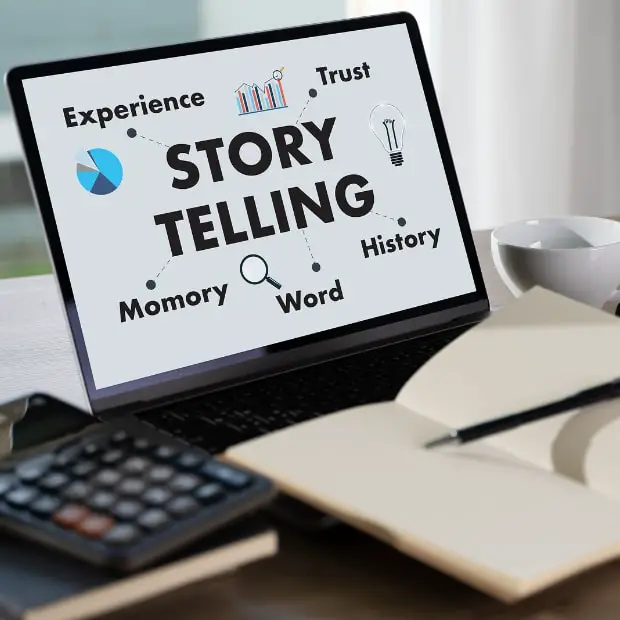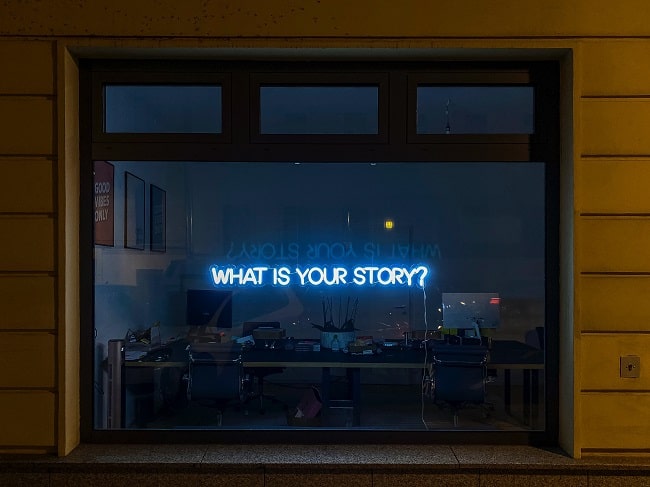
Creative storytellers don’t always overflow with brilliantly mind-blowing ideas.
Whether they’re writers, painters, musicians, or business owners, creative people need to exercise their brains – just like a muscle. The more you practice coming up with fresh ideas, the better you get at it. Most artists go through hundreds of awful ideas before they reach their breakthrough. Just like lifters get better at lifting. The more they lift, you’ll get better at writing stories the more you do it. Here are a few exercises that’ll set you on the right path to creative genius!
Storytelling Exercises Worth Practicing
1. Use Writing Prompts
For many writers, coming up with story ideas is one of the hardest parts when it comes to exercising creative writing. The simplest solution – find that creative spark with a story prompt. Writing prompts are helpful little tools. They’re essentially story ideas that give you very basic information on the setting, characters, or plot. Sometimes, writing prompts only give you a path to reach the story title or give you an inkling of your unique idea. They come in many forms, and can even be randomly generated. A writing prompt doesn’t determine the story for you – instead, it contains just enough information to get you going.

Race against the clock
The best way to write with a prompt is to give yourself a time limit. There’s something quite liberating about time-bound writing – it doesn’t allow you to second-guess every little detail, you just have to keep writing to make it in time. A fun way to enjoy writing prompts is to find and post them on Reddit. There, you get to receive feedback and read the stuff other writers came up with for that particular prompt.
2. Use The Story Spine Technique
Created by the improvisational theater coach Kenn Adams, and popularized by Pixar’s storyboard artist Emma Coats, Story Spine is a helpful exercise that gives you a framework for your story. This 8-sentence storytelling exercise utilizes a simple structure that most great stories are built upon. Kenn gives you eight sentence starters, and your job is to say the starter and improvise the rest. This exercise was designed for improv, but it can easily be utilized by writers too. Combine the story spine with a writing prompt if you don’t know what to write about!
3. Practice People Watching
To create believable characters, you need to know real people and their behaviors. The best way to get creative with character creation is to base your work around real people. People-watching is a perfect activity for creative character-building. If you’ve read Sherlock Holmes, you probably remember the protagonist’s amazing skill: he just takes a few glances at a person, and he instantly deduces particular details about them. He figures out a person’s profession by looking at their hands or shoes, or their marital status from the way they dress and walk. When observing people, your goal is to become like Sherlock – but it doesn’t matter how accurate or fictional your speculations are. Here’s how it’s done:
- Find a comfortable place to sit and watch the passers-by.
- Pick a random person that seems interesting and describe them first. Then, start to build their story around the details you see.
- For example, if they carry a guitar case, they might be an ex-rock star who plays on the street after the band kicked them out for stealing electric cables from concert venues. Another person might be wearing a long skirt to hide their self-harm scars after being traumatized by the suicide of a kid they bullied at school. A person with a big hat and scarf might be wearing those to hide a conjoined twin.
You can do this activity alone, but it’s more fun with a friend.

4. Critique Other Stories You Come In Contact With
Understanding exactly what you like and dislike in stories will make you an overall better storyteller. To do this, you need to watch, listen, or read a story first, and then analyze it. The format doesn’t matter – but it’s best to write it down or say it out loud. Giving critique is a great way to force your brain to analyze particular elements, style choices, story arcs, character motives, and much more. In the end, you’ll come out knowing a bit more about yourself and your tastes.
5. Look For Daily Stories Worth Telling
Many great writers derive plot ideas from things that happen in their lives. To help you write real-life-driven plots, make journaling a habit. Only a few minutes a day will suffice. Each day, sit down and write down anything interesting that happened to you that day. It doesn’t need to be a big, life-changing experience. You can write about a small delight of eating a pancake, a great joke your friend made, your thoughts about popular culture, or the circumstances that led to you missing a bus. Every single day contains moments worth writing about. By doing so each day, you’ll quickly create a thick journal full of interesting moments that you can use to enrich your storytelling.
6. Get Creative On Zoom
Zoom is another improv theater technique that can be an amazing storytelling exercise if you have a partner to work with. It’s a helpful tool that teaches you when to add and when to cut back on detail.
- Start narrating a story (use a writing prompt if you’re not sure where to start)
- Your partner should occasionally tell you to “zoom in” or “zoom-out”
- When you “zoom in”, focus on describing details, and when “zooming out”, reduce the level of detail and focus on the main plot.
7. Play The Fortunately – Unfortunately Game
If you have a storytelling group, give this exercise a go! *It works best with an odd number of members.*
- Have everyone sit in a circle.
- Think of the first sentence of a story – you only need to briefly set the scene
- The next person in the circle should continue the story, starting their sentence with “Unfortunately…”
- The person after them continues with “Fortunately…”
- Alternate between fortunately and unfortunately as long as you want.

8. Form a Line
If you have a group of storytellers around you, you can all collaborate to make a single story.
- Each person needs one blank card and a marker. When it comes to writing, make sure everyone writes in large letters that can be read from a distance.
- Find a volunteer to start. They need to create a statement that will be the beginning of the story. It can be anything that fits on the card. For example “My family left the house”, “It’s a cold morning on the mountain”, or “The phone rang”.
- The volunteer should get up and face others so that all other participants can read their cards.
- The next person should write the ending statement of the story. They can consider the opener but can stray as far away from it as they like. It can be anything, from “I finally arrived home” to “the Universe died – and with it, all life.”
- Every person to write next should create a piece of the story that happens in between. Only the beginning and the ending have their places set in stone. Every next person can stand between any two people – wherever they want to add their piece of the story.
- Once all storytellers form a line, each person should read their card, so that you can hear the whole story from beginning to end.
Conclusion
Awakening creativity is rarely accomplished by waiting for your muse’s gentle whisper on a rainy night when you’re slightly inebriated (although that’s a good place to start). Quite to the contrary, becoming a great storyteller is all about practice, repetition, and exposure to great prose or even cinema and TV. Please put yourself out there, take a risk of exposing your ideas to others, and put the ideas laid out in this article into action. Your artistic conscience is going to thank you for it. Next up, you may want to explore a guide on how to become more creative.
Hey there, welcome to my blog! I'm a full-time entrepreneur building two companies, a digital marketer, and a content creator with 10+ years of experience. I started RafalReyzer.com to provide you with great tools and strategies you can use to become a proficient digital marketer and achieve freedom through online creativity. My site is a one-stop shop for digital marketers, and content enthusiasts who want to be independent, earn more money, and create beautiful things. Explore my journey here, and don't forget to get in touch if you need help with digital marketing.

